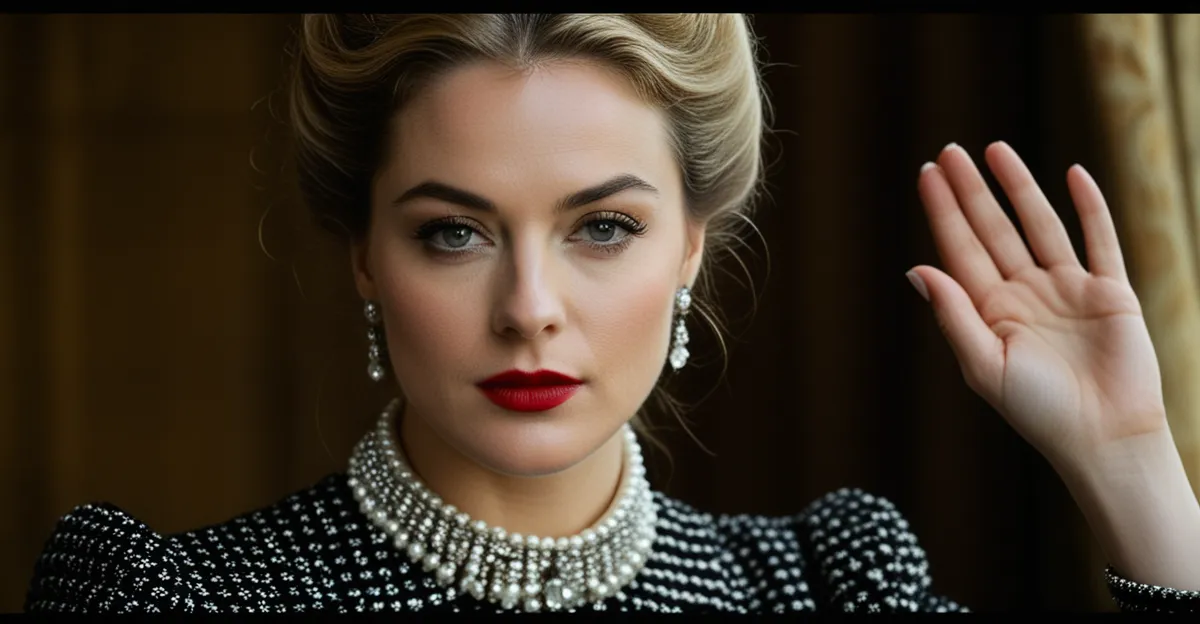The Lasting Influence of Historical Eras on Modern UK Women’s Fashion
Historical fashion eras profoundly shape modern UK fashion, creating a continuous thread between past and present styles. Key historical periods—from the Victorian era to 1960s mod—have contributed essential elements that remain visible in today’s women’s wardrobes. This enduring influence manifests through the preservation and reinvention of silhouettes, fabrics, and motifs that were once iconic but have since evolved.
Silhouettes developed in earlier centuries, such as the structured waistlines and full skirts of Victorian fashion, persist in contemporary designs, albeit reimagined to suit modern tastes and functionality. Fabrics like delicate lace or robust tartan carry forward, adding texture and meaning derived from their historical contexts. Motifs—be it the intricate frills of the Victorian age or the bold geometrics of the 1960s mod movement—continue to inspire pattern-making and garment detailing.
Additional reading : How Are British Women Redefining Fashion Trends?
This ongoing dialogue between past and present styles is not merely replication but an active reinterpretation. Designers blend vintage aesthetics with modern materials and tailoring techniques, resulting in collections that acknowledge heritage while appealing to today’s consumer. The influence of the past thus remains a vibrant force in shaping contemporary UK women’s fashion, emphasizing continuity over rupture and reflecting cultural identity through dress.
Victorian Elegance Reimagined in Contemporary Design
Victorian fashion continues to exert a profound influence on contemporary UK designers, who skillfully reimagine classic elements such as corsets, lace, and delicate frills. The original Victorian silhouette, noted for its structured corsetry and intricate lacework, is evident today not just in couture but also within high street collections. Designers often modernize these features, blending them with current tailoring methods to create garments that are both elegant and wearable.
In the same genre : What Are the Latest Fashion Innovations Transforming UK Women’s Style?
The revival of Victorian frills appears prominently on runways, where ruffled collars and gathered sleeves evoke the era’s romantic aesthetic. Lace, once a symbol of luxury and femininity in Victorian times, is widely used in contemporary fashion to add texture and vintage sophistication. This enduring popularity showcases how historical fashion eras directly feed into the creativity of today’s designers, offering rich visual and textural palettes.
Modern UK fashion also embraces the corset not just as undergarment but as outerwear, reflecting a bold reinterpretation of Victorian ideals of shape and posture. The corset’s integration with modern fabrics and functional design demonstrates the dialogue between old craftsmanship and new technology. Through this lens, the influence of the past reveals itself as an ongoing conversation, where Victorian fashion motifs are adapted to suit contemporary lifestyles without losing their distinct identity.
The Roaring Twenties and Flapper-Inspired Fashion
The 1920s fashion era introduced revolutionary styles characterized by the carefree and bold flapper style. Today’s modern UK fashion draws heavily on these influences, particularly the use of art deco motifs and intricate embellishments. Designers frequently incorporate beaded patterns and geometric shapes reminiscent of the 1920s, translating opulence and movement into modern eveningwear.
Flapper dresses, distinguished by their dropped waists and shorter hemlines, find new life in contemporary collections. These dresses embody freedom and rebellion against rigid social norms, themes that resonate powerfully with present-day consumers. Many designers reinterpret these features with modern fabrics and cuts, creating garments that honor the past while appealing to today’s aesthetic and functional demands.
The influence of the past during this decade extends beyond clothing shapes to detailed adornments. Beading, sequins, and fringes, hallmarks of the 1920s, activate movement and light, effects that contemporary designers replicate to capture that vintage glamour. The continued popularity of flapper-inspired pieces signifies an ongoing dialogue between the exuberance of the Roaring Twenties and the sophistication of modern UK women’s fashion.
1960s Mod and Youth Culture’s Enduring Legacy
The 1960s mod era remains a cornerstone of modern UK fashion, particularly through its revolutionary embrace of youthful rebellion and bold aesthetics. Iconic elements like the mini skirt and striking geometric prints continue to influence contemporary collections, demonstrating the influence of the past on present-day design. The mini skirt, which first symbolized liberation and modernity in the 1960s, is regularly reimagined by UK designers, who update its length, fabric, and tailoring to meet today’s fashion tastes without losing the original spirit.
Bold patterns—ranging from sharp stripes to polka dots—typify the era’s visual language and appear prominently in modern women’s wardrobes. These motifs, deeply connected to the vibrant youth culture of the time, underline how historical fashion eras infuse current styles with both energy and identity. The ongoing dialogue between past and present styles is visible in the layering techniques and monochrome palettes designers employ, merging classic mod minimalism with contemporary flair.
Contemporary UK designers frequently draw inspiration from the mod subculture’s ethos, using fashion to evoke a sense of individuality and social change. This influence extends beyond mere aesthetic borrowing; instead, it reflects the broader cultural shifts that continue to resonate in today’s design ethos. The persistent presence of mod elements in collections highlights the lasting power of historical fashion eras to shape modern UK women’s fashion in both subtle and striking ways.
Punk and Subcultural Rebellion in High Fashion
Punk fashion’s bold, rebellious aesthetics continue to play a significant role in modern UK fashion, especially through the integration of subcultural rebellion elements into both luxury and streetwear. Distinctive features such as studs, tartan patterns, and a DIY attitude have been embraced by contemporary designers, making these motifs central to runway shows and high street trends alike. This enduring influence underlines how historical fashion eras linked to subcultures maintain a vibrant presence in present-day wardrobes.
The legacy of punk, which emerged in the 1970s as an anti-establishment movement, offers more than mere style—it embodies a spirit of defiance and individualism. UK designers frequently incorporate ripped fabrics, safety pins, and asymmetrical cuts, all hallmark features that echo punk’s disruptive narrative. These design choices resonate with modern consumers attracted to fashion that expresses personal freedom and nonconformity, highlighting the influence of the past beyond visual appeal.
A pivotal figure in this ongoing dialogue between history and current fashion is Vivienne Westwood, whose early work forged the connection between punk subculture and high fashion. Her collections continue to inspire designers, who reinterpret her pioneering use of tartan and rebellious embellishments to reflect today’s cultural dynamics. This persistent homage underscores how historical fashion eras rooted in subculture rebellion remain a powerful creative force within the UK fashion scene.
By weaving punk’s raw energy and iconography into modern designs, UK fashion not only honors its rebellious roots but also redefines them for a contemporary audience. The fusion of street-level authenticity with runway sophistication demonstrates the rich, ongoing conversation between past and present styles that shapes modern UK fashion today.
Royal Traditions and Their Role in Contemporary Style
Royal fashion, deeply entwined with British heritage, continues to wield significant influence on modern UK fashion. The influence of the past is particularly evident in how ceremonial dress codes inspire the silhouettes, fabrics, and detailing that appear in contemporary womenswear. Royal events serve as visible stages where tradition meets modern design, impacting styles far beyond palace walls.
Key elements such as heritage prints—like tartan and intricate embroidery—reflect historical royal preferences that designers incorporate into current collections. Tailoring is another critical aspect borrowed from ceremonial styles, characterized by structured jackets, precise cuts, and formal silhouettes that evoke regality. This melding of formality with contemporary trends ensures that royal influences remain relevant and wearable today.
High-profile occasions such as weddings, state banquets, and public ceremonies often set sartorial benchmarks that ripple through fashion lines, from luxury brands to high street labels. These events celebrate British tradition while encouraging innovation, prompting designers to balance respect for royal aesthetics with the need for contemporary appeal. Thus, royal traditions function as both a cultural touchstone and a dynamic source of inspiration, underlining the continual dialogue between history and modern UK women’s fashion.
Visual Comparisons: Then and Now in UK Women’s Fashion
A visual fashion comparison between historical and modern UK womenswear vividly illustrates the influence of the past on contemporary design. By juxtaposing archival imagery with today’s collections, one can trace how motifs, silhouettes, and fabric choices have evolved while maintaining continuity. Case studies often highlight key elements—for instance, the structured Victorian corset alongside today’s fitted bodices reveals how form and function merge across time.
These side-by-side comparisons show that while the historical fashion eras provide foundational aesthetics, modern UK fashion adapts these influences with updated tailoring, new materials, and shifts in cultural context. For example, 1920s flapper dresses with dropped waists and elaborate beading find resonance in modern eveningwear that balances vintage glamour with contemporary practicality. Similarly, the bold geometric prints of the 1960s mod movement appear refreshed in current street styles and runway collections, proving the durability of classic themes.
Visual case studies also demonstrate how designers reinterpret rather than replicate. By analyzing garments from the past alongside present-day examples, it becomes clear that ongoing dialogue between past and present styles fosters innovation. This interaction enriches modern UK women’s fashion, ensuring it is both rooted in heritage and responsive to today’s aesthetics and consumer needs.







